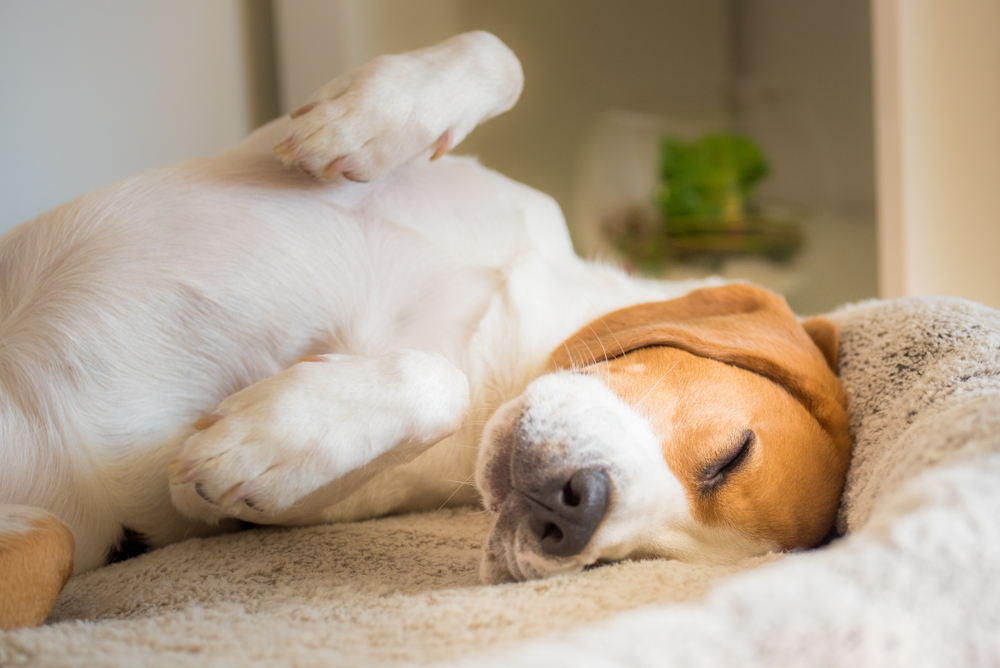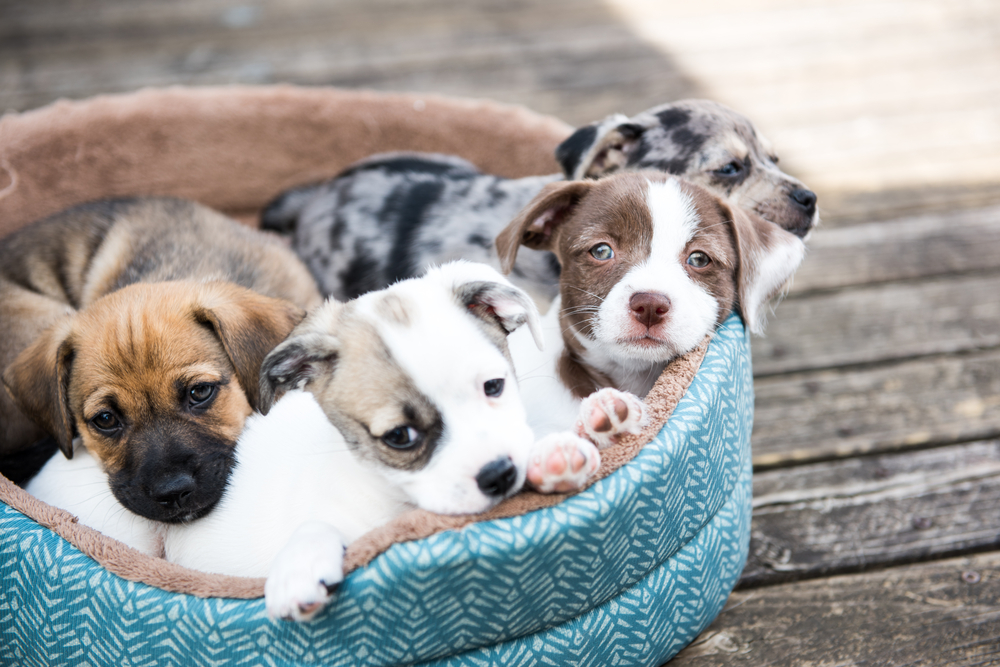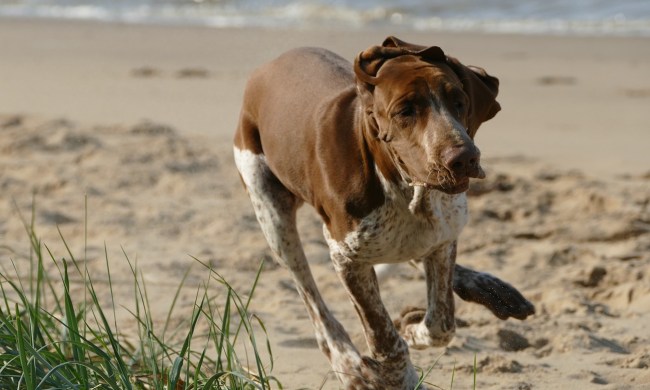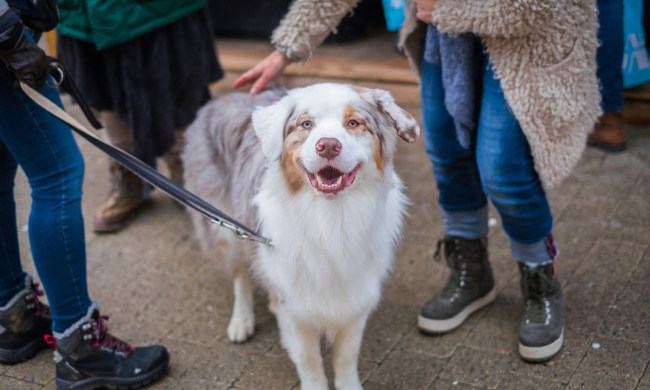Most likely, our ancestors first used dogs as pack animals and hunters during the day, keeping them close by to provide warmth and protection at night. And while we don’t need dogs to haul our gear or help us find food anymore, today more than 56% of dog owners say they sleep next to their dogs.
But what about the other 44%? If you’re not among those dog owners who welcome sharing a bed with their dog, how do you keep them from claiming it as one of their favorite places to grab a few winks? Here are our top tips to help you train dogs to avoid beds.

How to keep your dog off the bed
Naturally, the best way to train your dog to stay off the bed is not to let him jump up on it in the first place. So, if you’re in the process of adding a four-legged friend to your family and don’t want her on the furniture, it’s best to make that clear from the very beginning.
- Give her a bed of her own. Purchase a bed appropriate for your dog’s size and put it in an area where she will feel safe and secure. Encourage her to lie down on it by using praise and treats as rewards for good behavior.
- Consider crate training. In addition to being a good place for your dog to sleep at night, a crate can provide safety and security for your pet whenever you leave the house for short periods. Note: Puppies should never spend more than four hours at a time in a crate, no more than six to eight hours for adult dogs.
- Restrict access to your bedroom. This might mean closing the door during the day or installing a gate in the doorway.
The process might look a little different for dogs who have become accustomed to jumping on the bed at will.
- Limit entry to your bedroom right away. This helps your dog learn that it is no longer appropriate to enter your bedroom without permission.
- Introduce commands “up” and “down.” Pat the bed and say “up” to invite her on the bed, then reward her with a training treat and praise. When she jumps up on the bed without an invitation, which she probably will if it’s a habit, say “down” and entice her off the bed with a training treat, then spend some time playing with her on the floor.
- Create her own sleep spot. If you haven’t already done so, purchase a dog bed or crate appropriate for her size. Train her to lie on it by using training treats as you give the command “lie down” or “bedtime.”
Above all, be patient and consistent. Regardless of whether your dog is just learning the rules or you are trying to break a bad habit, you’re not likely to see results right away. Remember, positive reinforcement, such as treats and praise, is the best motivator for creating positive behavior.

Why does your dog like to lie on your bed anyway?
Although the answer to this question might seem obvious, there are actually a few factors involved.
- Comfort and warmth. Some dogs prefer to lie on hard surfaces, while others opt for something softer. And we all know that snuggling keeps both parties toasty.
- Familiar smell. A recent study found that the reward center in a dog’s brain lights up when smelling his owner. When you add the fact that a dog’s sense of smell is up to 100,000 times better than a human’s, you can see how much your dog might love lying in a pile of sheets and blankets that smell like you.
- Separation anxiety. If it seems your dog jumps on your bed only when you’re not home, she might have a mild case of separation anxiety. Curling up in a pile of soft material that smells like you might make her feel more secure.
- She believes it is her spot. Some animal behaviorists believe that sharing your bed with your dog impacts her perception of who’s in charge.
If you’re simply worried that you shouldn’t allow your dog on the bed, don’t fret. Historians say humans have been sleeping with their dogs for centuries, and most medical experts believe this practice is harmless as long as you aren’t allergic to dog dander or your dog’s restlessness doesn’t keep you from getting a good night’s sleep. Regardless of which camp you’re from, one thing is certain: Whether your dog sleeps in your bed or one of her own, our lives are better when there’s a dog in them. If you’d like to learn more about your puppy, or need a guide on how to puppy proof an apartment, we’ve got you covered.


